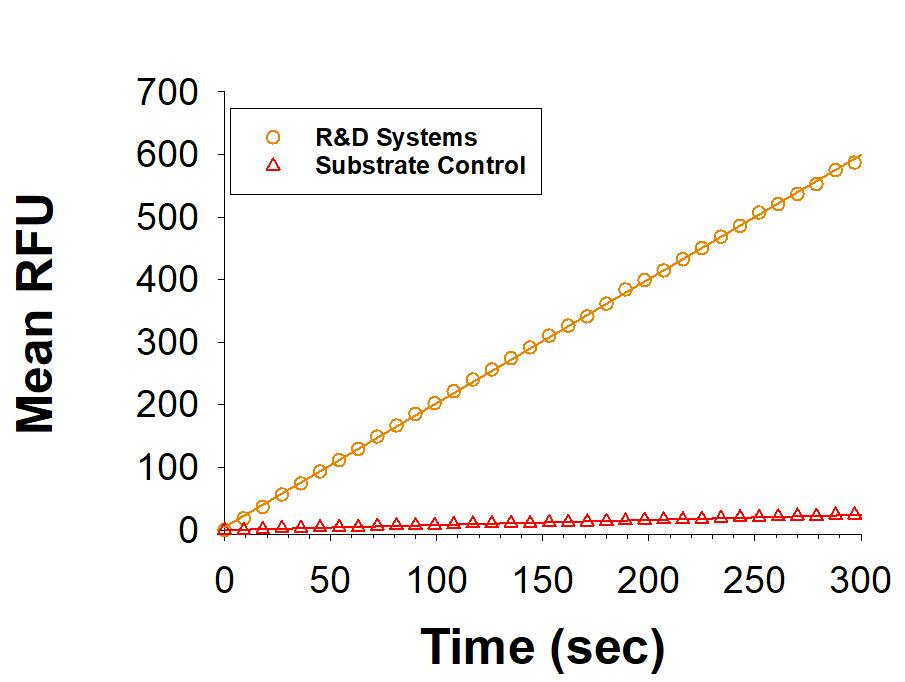Recombinant Human Renalase Protein, CF
R&D Systems, part of Bio-Techne | Catalog # 9887-RE

Key Product Details
Product Specifications
Source
E. coli-derived human Renalase protein
Ala2-Ile342
with substitution Glu37Asp, N-terminal Met and 6-His tag
Ala2-Ile342
with substitution Glu37Asp, N-terminal Met and 6-His tag
Purity
>95%, by SDS-PAGE visualized with Silver Staining and quantitative densitometry by Coomassie® Blue Staining.
Endotoxin Level
<1.0 EU per 1 μg of the protein by the LAL method.
N-terminal Sequence Analysis
Met
Predicted Molecular Mass
39 kDa
SDS-PAGE
39 kDa, reducing conditions
Activity
Measured by its ability to reduce Resazurin.
The specific activity is >3.5 pmol/min/μg, as measured under the described conditions.
The specific activity is >3.5 pmol/min/μg, as measured under the described conditions.
Scientific Data Images for Recombinant Human Renalase Protein, CF
Recombinant Human Renalase Protein Enzyme Activity
Recombinant Human Renalase (Catalog # 9887-RE) is measured by its ability to reduce Resazurin (Catalog # AR002).Formulation, Preparation and Storage
9887-RE
| Formulation | Supplied as a 0.2 μm filtered solution in Tris, EDTA, DTT and Glycerol. |
| Shipping | The product is shipped with polar packs. Upon receipt, store it immediately at the temperature recommended below. |
| Stability & Storage | Use a manual defrost freezer and avoid repeated freeze-thaw cycles.
|
Background: Renalase
References
- Xu, J. et al. (2005) J. Clin. Invest. 115:1275.
- Beaupre, B. A. et al. (2015) Biochemistry 54:795.
- Moran, G.R. et al. (2016) Biochim. Biophys. Acta 1864:177.
- Milani, M. et al. (2011) J. Mol. Biol. 411:463.
- Fedchenko, V. et al. (2016) Kidney Blood Press. Res. 41:593.
- Guo, X. et al. (2014) Curr. Opin. Nephrol. Hypertens. 23:513.
- Wu, Y. et al. (2011) Kidney International 79:853.
- Lee, H.T. et al. (2013) J. Am. Soc. Nephrol. 24:445.
- Buraczynska, M. et al. (2011) Neuromolecular Med. 13:321.
- Orlowska-Baranowska, E. et al. (2017) PLoS One 125:e0186729.
- Wang, L. et al. (2015) PLoS ONE 10:e0122932.
- Wang, L. et al. (2014) J. Am. Soc. Nephrol. 25:1226.
- Wang, Y. et al. (2017) J. Cell. Mol. Med. 21:1260.
Alternate Names
C10orf59, RNLS
Gene Symbol
RNLS
UniProt
Additional Renalase Products
Product Documents for Recombinant Human Renalase Protein, CF
Product Specific Notices for Recombinant Human Renalase Protein, CF
For research use only
